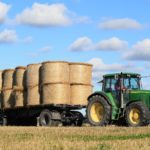Why Soil Sample?
go.ncsu.edu/readext?455785
en Español / em Português
El inglés es el idioma de control de esta página. En la medida en que haya algún conflicto entre la traducción al inglés y la traducción, el inglés prevalece.
Al hacer clic en el enlace de traducción se activa un servicio de traducción gratuito para convertir la página al español. Al igual que con cualquier traducción por Internet, la conversión no es sensible al contexto y puede que no traduzca el texto en su significado original. NC State Extension no garantiza la exactitud del texto traducido. Por favor, tenga en cuenta que algunas aplicaciones y/o servicios pueden no funcionar como se espera cuando se traducen.
Português
Inglês é o idioma de controle desta página. Na medida que haja algum conflito entre o texto original em Inglês e a tradução, o Inglês prevalece.
Ao clicar no link de tradução, um serviço gratuito de tradução será ativado para converter a página para o Português. Como em qualquer tradução pela internet, a conversão não é sensivel ao contexto e pode não ocorrer a tradução para o significado orginal. O serviço de Extensão da Carolina do Norte (NC State Extension) não garante a exatidão do texto traduzido. Por favor, observe que algumas funções ou serviços podem não funcionar como esperado após a tradução.
English
English is the controlling language of this page. To the extent there is any conflict between the English text and the translation, English controls.
Clicking on the translation link activates a free translation service to convert the page to Spanish. As with any Internet translation, the conversion is not context-sensitive and may not translate the text to its original meaning. NC State Extension does not guarantee the accuracy of the translated text. Please note that some applications and/or services may not function as expected when translated.
Collapse ▲RALEIGH — Spring is the best time to fertilize your shrubs as it promotes optimal growth with healthy foliage and abundant flowers. Well-fertilized shrubs not only improve the aesthetics of the landscape and provide wildlife habitat, but also enhance value and appearance of the property.
The N.C. Department of Agriculture and Consumer Services’ Agronomic Services Division encourages home gardeners, community gardeners and landscapers to submit soil samples to optimize growing conditions. From April through mid-November, soil testing is free, and samples are typically turned around within two weeks.
“Fertilizers provide nutrients to help plants grow, but it is important to apply the correct amount and type of fertilizer to promote optimal plant growth,” said Jagathi Kamalakanthan, an NCDA&CS soil testing agronomist. “If the soil pH does not match the plant needs, then fertilizing alone may not be helpful.”
It is also important to follow the lime recommendation on the soil test report, Kamalakanthan said. For most shrubs, a pH of 6.0 is optimal; however, acid-loving plants such as azaleas, camellias, rhododendron and mountain laurel prefer a pH of 5.0.
While a lack of proper soil nutrients can lead to poor growth, other environmental factors may be an underlying contributor. Those include inadequate sunlight, soil compaction, poor drainage, insects or diseases.
Before deciding fertilizer is the answer, determine why plants are growing poorly, then correct the factors contributing to poor growth, Kamalakanthan said. Fertilization may help, but only after other problems are corrected.





